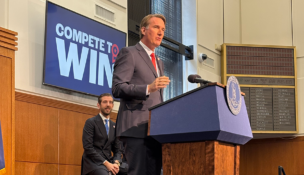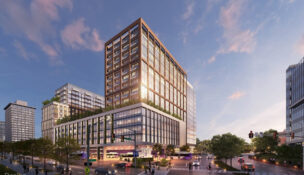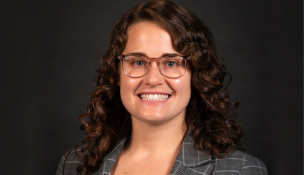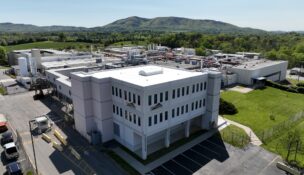Northam proposes $150M for site readiness
Funding would be "transformative," says state economic development official
Robyn Sidersky //December 16, 2021//
Northam proposes $150M for site readiness
Funding would be "transformative," says state economic development official
Robyn Sidersky //December 16, 2021//
When Mazda Toyota was looking to build a plant that would have brought 4,000 jobs and 1.6 billion in investment, Virginia was ruled out. Why? Because Virginia didn’t have a competitive project-ready site available. Huntsville, Alabama, landed the deal instead.
Since 2016, Virginia has lost out on 42,000 direct jobs and over $75 billion in capital investment, due to the lack of ready sites or available buildings, said Jason El Koubi, executive vice president at the Virginia Economic Development Partnership. “That’s the total impact of projects that considered Virginia and that eliminated Virginia from consideration because we did not have a project-ready site that was sufficient to secure the project,” said El Koubi, who will take over as VEDP’s interim president and CEO on Jan. 1, following the departure of VEDP President and CEO Stephen Moret. “The cost of not investing in site development has become very clear and very alarming.”
In an effort to solve this problem, Gov. Ralph Northam announced Thursday that his 2022-23 proposed budget to the General Assembly will include a proposal for $150 million to fund VEDP’s existing Virginia Business Ready Sites Program, which has a goal of identifying, assessing and improving the readiness of potential industrial sites containing at least 100 acres of contiguous, developable acres.
“These historic investments will be felt in every corner of the commonwealth and represent an investment in our collective economic future,” Northam said in a statement. “Companies want to invest here, and we can make it easier for them by preparing these industrial sites for their use. We have an opportunity to improve Virginia’s economy and create jobs for thousands of people — so we must take full advantage of it.”
Of the proposed $150 million state investment, $100 million would be dedicated to develop project-ready industrial megasites (250+ acre sites) that could accommodate the needs and short timelines of businesses considering making major investments in Virginia. The remaining $50 million would be used to develop midsize industrial sites (100+ acre sites) across the state.
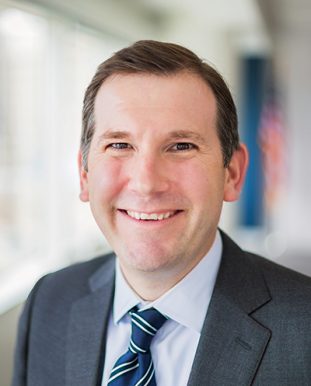
“The lack of project-ready sites is one of the most common reasons that Virginia loses manufacturing and supply chain projects today,” El Koubi said.
Virginia often competes with states such as Georgia, North Carolina, South Carolina, Tennessee, Ohio, Alabama, Kentucky and Michigan for large manufacturing and supply chain projects. One of these, El Koubi says, was a Toyota battery plant that would have brought 1,000 jobs and more than $1 billion in capital investment. It wound up locating in North Carolina.
It’s hard to compare states because of their different sizes and physical characteristics, but El Koubi says the main thing the proposed $150 million investment will do is make sure Virginia has an inventory of project-ready sites that are competitive for all types of projects, positioning Virginia to secure roughly 20,000 new direct jobs across the commonwealth, as well as billions of dollars in capital investment. It would allow VEDP to partner with localities to prepare a handful of megasites and 10 to 20 mid-size sites over the next several years.
“It’s transformative in terms of unlocking a major obstacle,” El Koubi said.
Project-ready sites are low development risks — due diligence has been performed and developers ideally are able to construct projects on such sites in 12 to 18 months. “Speed is an essential competitiveness factor for communities and states that are competing for competitive projects,” El Koubi noted.
Over the past few years, Virginia’s state government has invested roughly $1 million each year on site readiness. In 2019, VEDP used a special appropriation of $2 million to build a database of more than 460 industrial sites across the state totaling 25 acres or larger across 103 localities. That gave the state “unparalleled intelligence” and put in a position to invest strategically, El Koubi said.
Having more sites ready for development is also something Gov.-elect Glenn Youngkin spoke about on the campaign trail this year.
“I recommended that we include up to $200 million out of the American Rescue Plan money to be put forth to site readiness across Virginia so that companies can move here,” Youngkin told Virginia Business during a September interview.
When asked how he thought the General Assembly and Youngkin would view the proposal, El Koubi was optimistic. He’s heard economic developers, community leaders and business leaders from every corner of the state talk about the importance of site development.
“I think people across the commonwealth recognize this as a critical obstacle and so in that respect, I am confident that this challenge is understood and there is a lot of enthusiasm about the opportunity to address it,” El Koubi said. “Virginia has a very attractive business climate overall, we have a lot of strengths, including a strong workforce, strong workforce solutions, robust transportation infrastructure, great quality of life that would otherwise make the commonwealth a very very attractive location for these transformative projects. But the lack of project-ready sites, particularly project-ready mega sites, is a critical obstacle that we need to address.”
l

